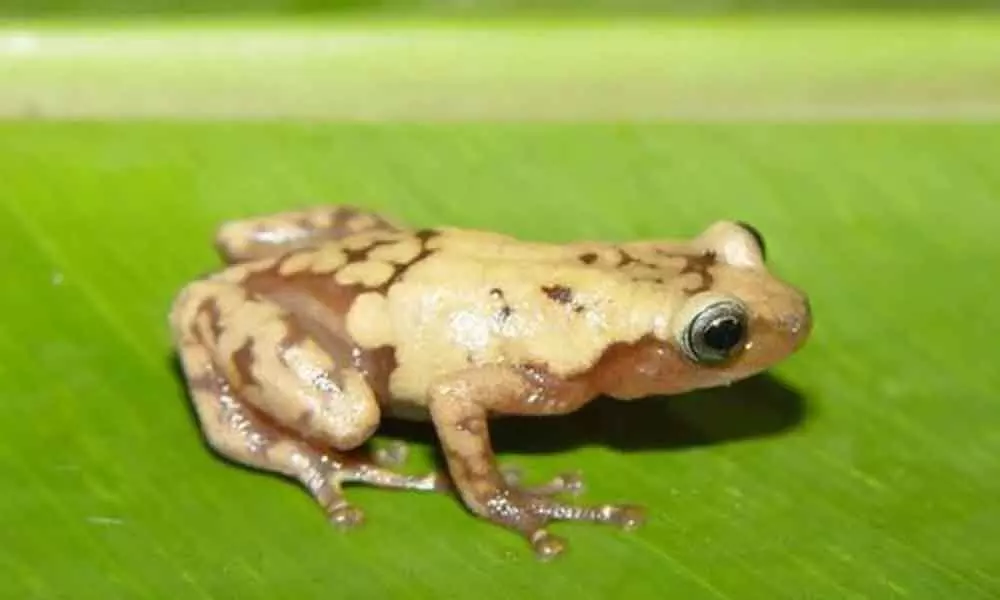Live
- Nizamabad MP Dharmapuri Arvind and Jagtial MLA Dr. Sanjay Kumar Meet CM Revanth Reddy
- Hyderabad CP CV Anand Issues Stern Warning to Bouncers
- MP Laxman Criticizes Police Conduct, Calls for Support for Victims' Families
- Fire Breaks Out in Kachiguda-Chennai Egmore Express, Passengers Evacuated Safely
- CM Revanth Reddy Condemns Attacks on Film Personalities' Homes, Calls for Strict Action
- Victory Venkatesh and Nandamuri Balakrishna to Set Screens on Fire with Unstoppable Season 4
- Over 71.81 crore Ayushman Bharat Health Account numbers generated: Centre
- In special gesture, Kuwait's Prime Minister sees-off PM Modi at airport after conclusion of historic visit
- Veer crowned PGTI Ranking champion, Shaurya wins emerging player honour
- Sr National Badminton: Unseeded Rounak Chauhan, Adarshini Shri reach singles semis
Just In
Animal species heading to extinction by 2070: Study


Climate change may cause one in three species of plants and animals worldwide to become extinct in the next 50 years, according to a study.
Washington: Climate change may cause one in three species of plants and animals worldwide to become extinct in the next 50 years, according to a study.
The researchers from the University of Arizona in the US compiled detailed estimates of global extinction from climate change by 2070. By combining information on recent extinctions from climate change, rates of species movement and different projections of future climate, they estimate that one-third of species of plants and animals may face extinction.
Their results, published in the journal PNAS, are based on data from hundreds of plant and animal species surveyed around the globe. The researchers examined local extinctions that have already happened, based on studies of repeated surveys of plants and animals over time. They analysed data from 538 species and 581 sites around the world.
The team focused on plant and animal species that were surveyed at the same sites over time, at least 10 years apart. The researchers generated climate data from the time of the earliest survey of each site, and the more recent survey. They found that 44 per cent of the 538 species had already gone extinct at one or more sites.
"By analysing the change in 19 climatic variables at each site, we could determine which variables drive local extinctions, and how much change a population can tolerate without going extinct," said Cristian Roman-Palacios from the University of Arizona. "We also estimated how quickly populations can move to try and escape rising temperatures. When we put all of these pieces of information together for each species, we can come up with detailed estimates of global extinction rates for hundreds of plant and animal species," Roman-Palacios said.
The study identified maximum annual temperatures -- the hottest daily highs in summer -- as the key variable that best explains whether a population will go extinct. The researchers found that average yearly temperatures showed smaller changes at sites with local extinction, even though average temperatures are widely used as a proxy for overall climate change.
"This means that using changes in mean annual temperatures to predict extinction from climate change might be positively misleading," said John J Wiens from the University of Arizona. Previous studies have focused on dispersal -- or migration to cooler habitats -- as a means for species to "escape" from warming climates. However, the latest study found that most species will not be able to disperse quickly enough to avoid extinction, based on their past rates of movement.
The researchers found that many species were able to tolerate some increases in maximum temperatures, but only up to a point. They found that about 50 per cent of the species had local extinctions if maximum temperatures increased by more than 0.5 degrees Celsius, and 95 per cent if temperatures increase by more than 2.9 degrees Celsius. Projections of species loss depend on how much climate will warm in the future. "In a way, it's a 'choose your own adventure,'" Wiens said.
"If we stick to the Paris Agreement -- that aims to keep temperature rise to below 2 degrees Celsius -- to combat climate change, we may lose fewer than two out of every 10 plant and animal species on the Earth by 2070," he said. However, if humans cause larger temperature increases, they could lose more than a third or even half of all animal and plant species, the researchers said. The projections of species loss in the study are similar for plants and animals, but extinctions are projected to be two to four times more common in the tropics than in temperate regions, they said. "This is a big problem, because the majority of plant and animal species occur in the tropics," Roman-Palacios added.

© 2024 Hyderabad Media House Limited/The Hans India. All rights reserved. Powered by hocalwire.com






